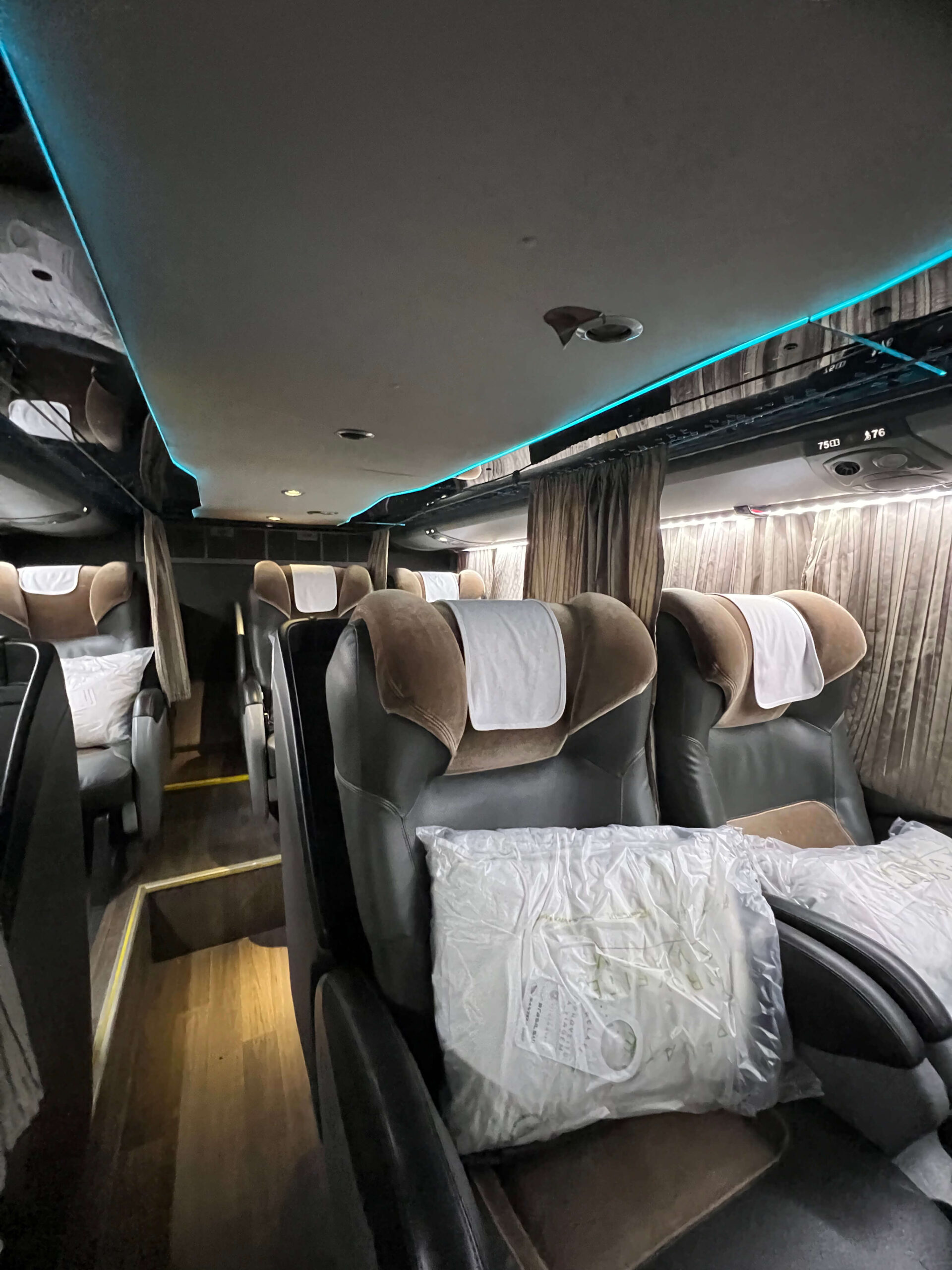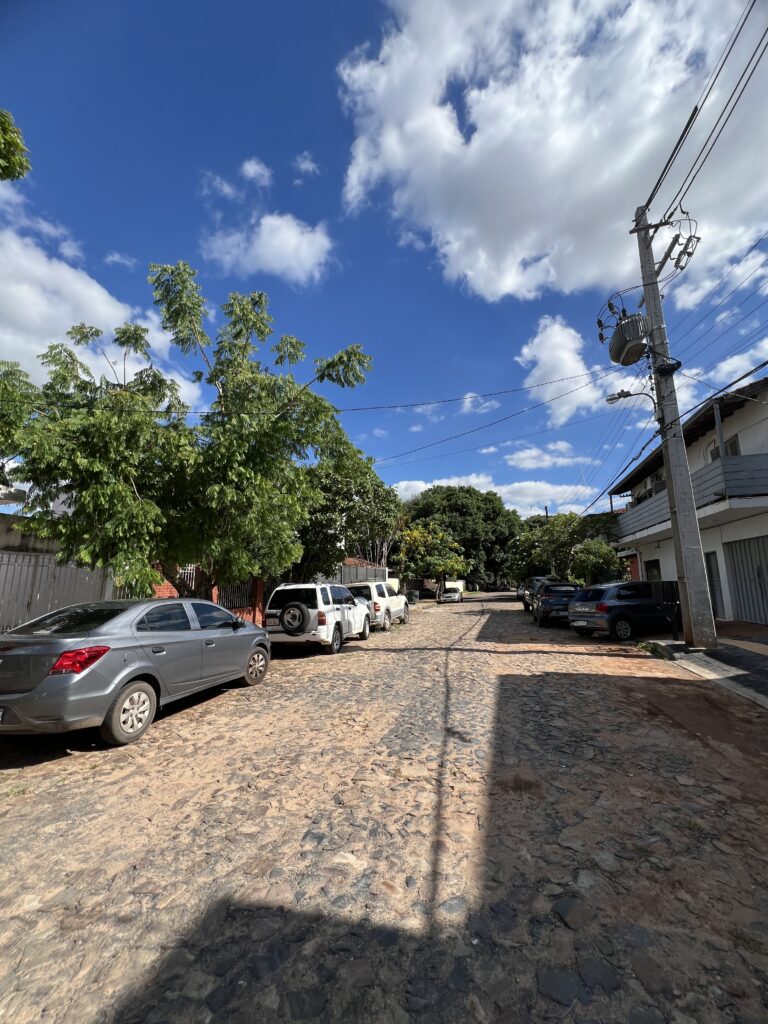Sleeper Bus Experience in Brazil: My 16-Hour Journey from São Paulo to Foz do Iguaçu
Introduction
Taking a sleeper bus across Brazil is something I never expected to enjoy, but after spending 16 hours on a luxury bus from São Paulo to Foz do Iguaçu (nearby to Paraguay), I can now say it was an experience worth sharing. This was my first time taking a sleeper bus in Latin America, and I had no idea what to expect.
Brazil is a massive country, and flights between major cities can be expensive, especially last-minute. So when I needed to get to Foz do Iguaçu, bordering Ciudad del Este in Paraguay, I skipped the airport hassle (a layover and a bus transfer, no thank you) and tried an overnight sleeper bus instead.
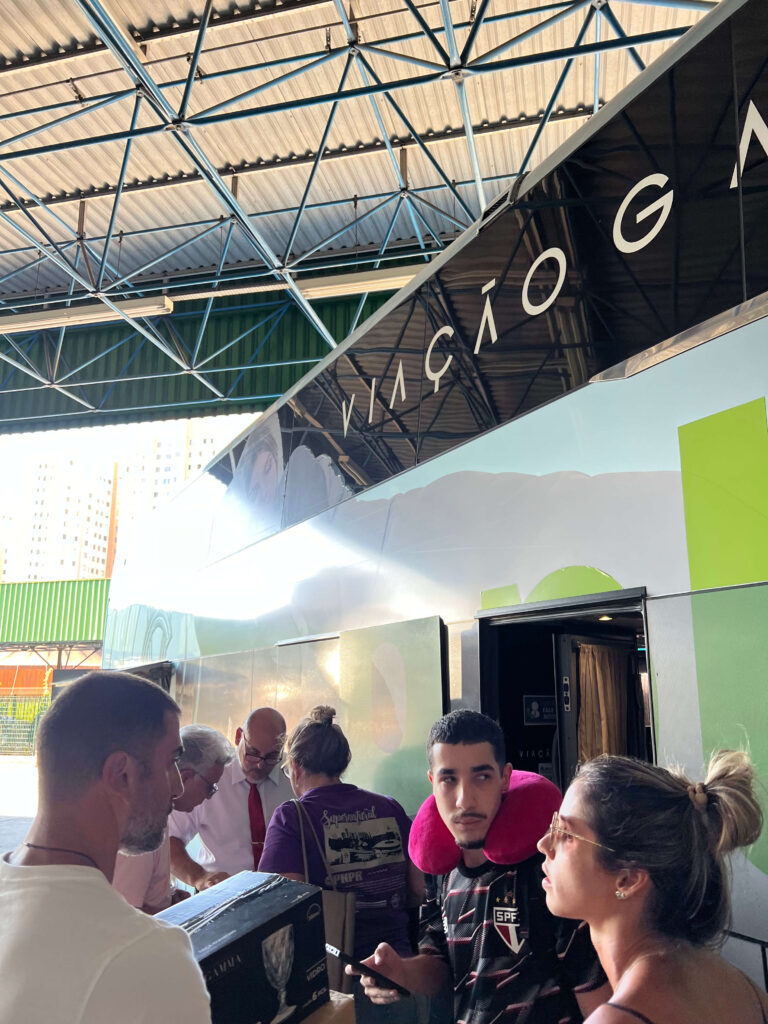
I wasn’t sure what to expect along the journey—would it be comfortable? Would I actually be able to sleep? Was it safe?
In this article, I’ll walk you through the entire experience, from booking my ticket to waking up in Foz do Iguaçu, and share what you need to know if you’re considering a sleeper bus in Brazil.
Why I Took a Sleeper Bus Instead of Flying
I had a few options for getting from São Paulo to Foz do Iguaçu:
- Flying: Faster but a bit more pricey—flights can range from $150 to $300 USD one-way, depending on the time of year. The flight I would have taken was into a town about 2 hours from Ciudad del Este, Cascavel, and would have meant a bus transfer from the airport to the bus station to take me into Foz do Iguaçu… too much extra work for me.
- Taking a Regular Bus: Cheaper (by a bit), but 16 hours in an upright seat didn’t sound appealing.
- Taking a Luxury Sleeper Bus: More affordable than flying and promised a comfortable, lie-flat seat where I could actually sleep.
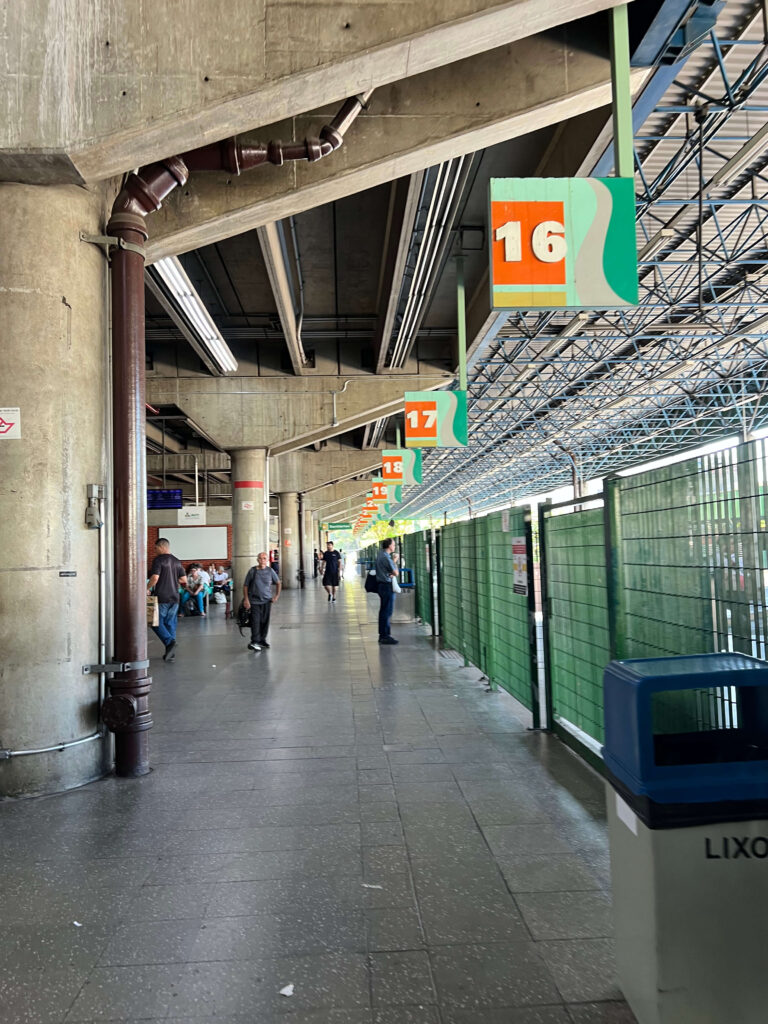
After some research, I found that sleeper buses in Brazil are surprisingly quite luxurious, offering nearly first-class airline-style reclining seats at a fraction of the price.
My one-way leito-cama (full bed) ticket cost me around $85 USD, which was cheaper than a flight and included a full night of travel (meaning I didn’t need to book a hotel for that night).
The cost at the time for a flight (one week in advance) was around $175 USD from São Paulo to Foz do Iguaçu, so the price wasn’t a significant amount less for a bus, however I opted to take a 16-hour bus ride instead of a 3 hour drive and security wait at the airport, a 1.5 hour flight, figuring out how to get to the Cascavel bus terminal, and catch a 2-hour bus ride from there… with all this in mind, a 16-hour bus ride is preferred!
I booked my ticket online through ClickBus, but you can also book directly through the bus company’s website or even at the station if you’re more spontaneous. I went with the bus operator called Brasil Sul, one of Brazil’s top bus operators.
Arriving at the São Paulo Bus Terminal
The journey started at the Barra Funda bus station, which is one of the smaller bus stations in São Paulo. The bus station itself is fairly clean, organized, and has plenty of small shops and restaurants to grab a quick bite or food on the go, although many of this shops don’t offer healthy food options, so it’s best to grab some food elsewhere before the journey.
Since I had booked my ticket online, all I had to do was show my confirmation at the ticket counter digitally and get my boarding pass. Unlike flying, there was no strict baggage check—I simply handed my suitcase to the attendant, got a luggage tag (just like at the airport), and kept my purse and backpack with me throughout the journey.
I was one of the first on the bus, and I was impressed. This wasn’t just any bus—it was massive, sleek, and looked almost brand-new. The bus had two levels: the top level had regular semi-leito (semi-bed) seats, while the bottom level, where I was sitting, had the luxury leito-cama seats that reclined almost fully flat.
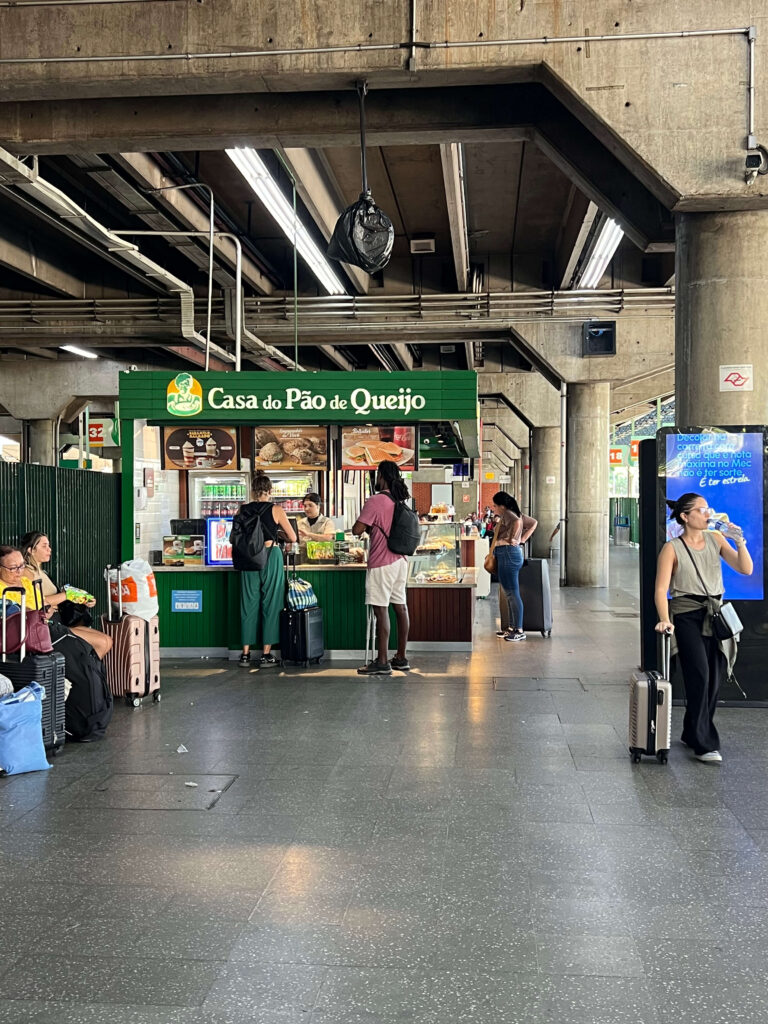
The Sleeper Bus Experience Setup & First Impressions
My leito-cama bed seat was wide, had plush padding, a footrest, and a privacy divider.
At my seat, there was:
– A comfortable pillow and blanket already waiting for me, wrapped as if it were brand new (or at least newly washed)
– A personal entertainment screen (though I had downloaded my own Netflix shows just in case – I can’t say if the language was only available in Portuguese)
– The driver offered us a small selection of snacks and drinks for free upon our arrival to the bus
There were only 8 seats available on the lower level of the bus, two individual rows with a curtain on the right side, and 3 rows of 2 side-by-side seats with divider curtains on the left side of the bus.
I was sitting in one of the individual seats on the right side.
The 16-Hour Journey
I wasn’t expecting much from bus sleep, but within an hour of departure, I was fully reclined, tucked in my blanket, and surprisingly comfortable. The bus was quiet and the lights were dimmed, and many people in the lower cabin fell asleep within the first few hours of the ride.
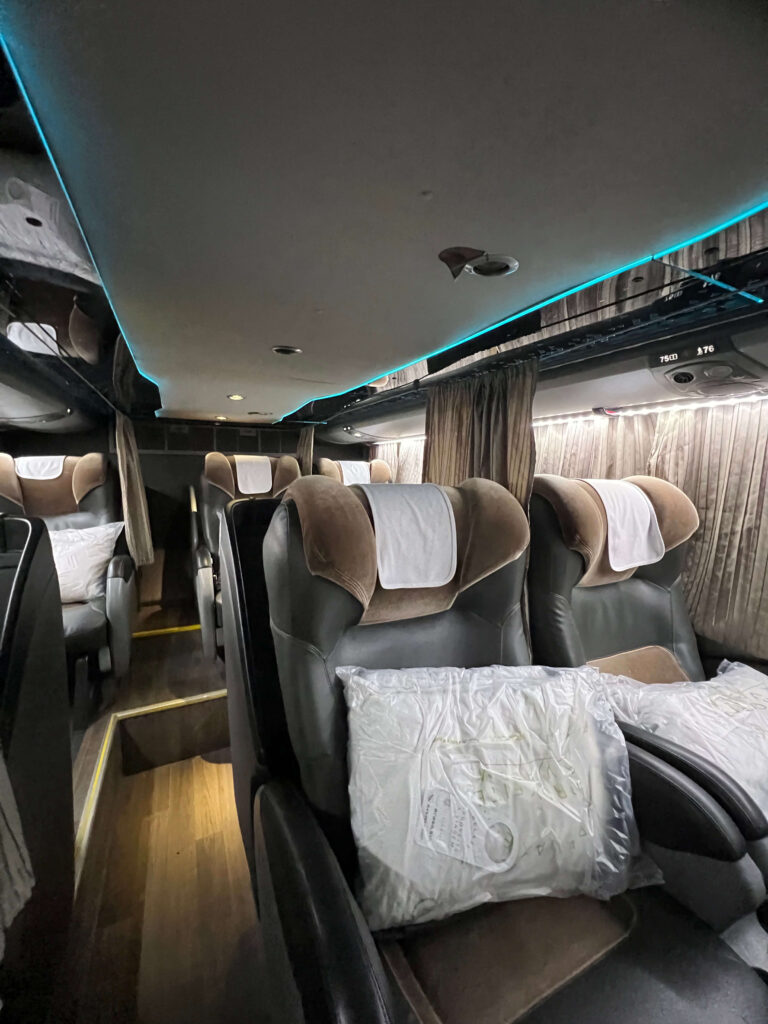
Food & Rest Stops
Unlike a flight, where you get a meal service, on the sleeper bus, we made a couple of scheduled stops at rest areas. These stops had small restaurants and convenience stores where I grabbed snacks and stretched my legs. As far as I saw, we stopped only at the pit stop location called Graal, which has modern and new bathrooms and restaurants available.
We made two Graal stops in total, and stopped for about 30 minutes each time before getting back on the road.
We didn’t get any more access to water or snacks from the bus driver as the trip went on, so best to bring some options in case you get hungry on the ride.
Was It Actually Possible to Sleep?
It was, almost to my surprise. The leito-cama seat reclined nearly 180 degrees, making it feel like a real bed. I didn’t sleep through the entire night, but I got at least 6-7 hours of solid rest, which is way better than what I would expect to get on a flight.
Tip: bring an eye mask and earplugs if you’re a light sleeper—some passengers snore or watch movies late into the night, and these amenities are not offered on the bus for sale.
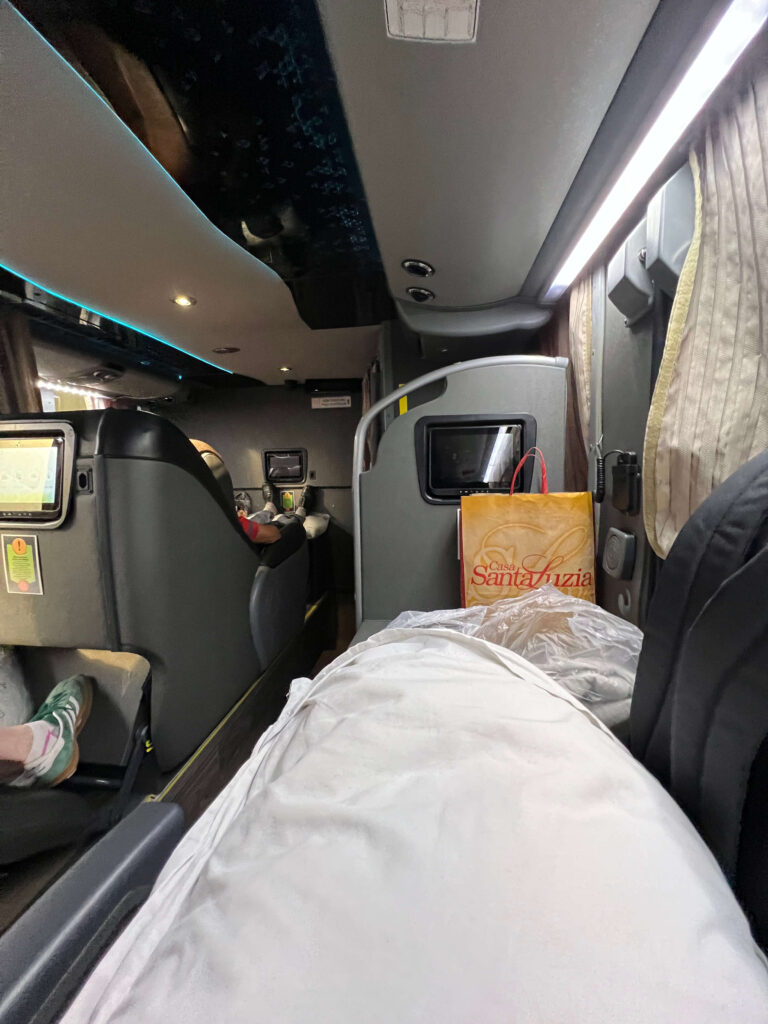
Arriving in Foz do Iguaçu
I woke up around 7 AM, just as we were approaching Foz do Iguaçu. The bus pulled into the station, and I stepped out feeling well-rested for having just spent 16 hours travelling… and honestly, it felt like I was on the bus for more like 6-7 hours than 16.
Would I Take a Sleeper Bus in Brazil Again?
For long-distance travel in Brazil, a luxury sleeper bus is 100% worth it—especially if you book a leito or leito-cama seat. While the price is still a bit high for a bus, it is worth it to not need to worry about logistics of flight and bus connections, and to get a good nights sleep while making it to your next destination.
I would advise if you are planning to cross borders on a bus, it may be best to get off at a bus stop before the border, as you may be waiting for hours or longer for the entire bus to get past the border control.
<div data-vi-partner-id=P00231626 data-vi-widget-ref=W-63b86aa9-0555-478b-ae07-fa4737a1c538 ></div>
Tips for Taking a Sleeper Bus in Brazil
1️. Book a leito or leito-cama seat – Standard seats aren’t worth it for long trips, and it only costs a bit more money
2️. Bring a neck pillow, eye mask, and earplugs – Especially if you are a light sleeper
3️. Charge your devices – Wi-Fi is hit or miss, and outlets aren’t always reliable – on my bus, we didn’t have Wi-Fi or a charger
4️. Pack snacks and water – Bus stops don’t always have great food options, and you don’t know how many times you will be stopping
5️. Keep valuables in your carry-on – I kept my backpack on my lap the entire trip, but had my luggage down below the bus with the other suitcases
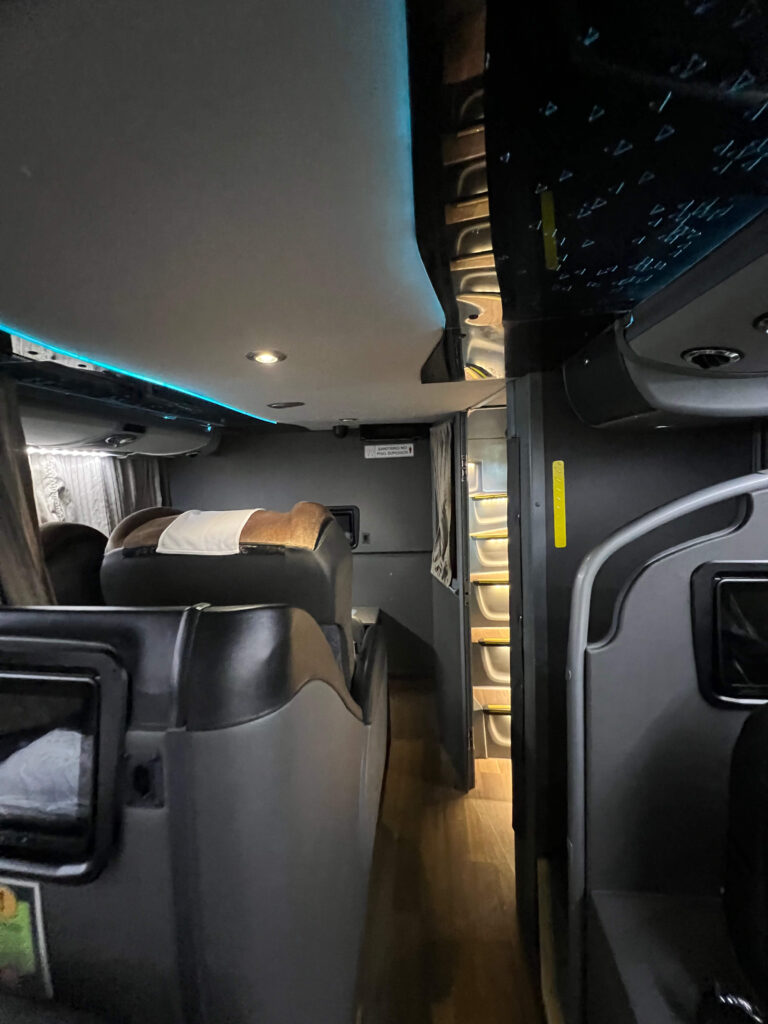
Conclusion: My Luxury Sleeper Bus Experience in Brazil?
Taking a 16-hour sleeper bus from São Paulo to Foz do Iguaçu was a comfortable, budget-friendly, and surprisingly relaxing experience.
If you’re looking for an affordable way to travel long distances in Brazil, I highly recommend trying a luxury sleeper bus—just make sure you book a leito or leito-cama seat for the best experience!
FAQ
Yes, sleeper buses in Brazil are generally safe, especially when travelling with reputable companies like Expresso do Sul, Catarinense, and Brasil Sul.
Bus stations have security, and long-distance buses have monitored luggage storage and passenger check-ins. Like any travel, keep your valuables with you in your carry-on.
Prices vary depending on the bus class:
Semi-Leito (semi-bed): Around $40-45 USD
Leito (bed seat): Around $60 USD
Leito-Cama (full-flat bed): Around $85 USD
Most luxury sleeper buses offer Wi-Fi and USB charging ports, but the reliability varies. Some buses have slow Wi-Fi, and not all seats have power outlets, so charge your devices before boarding.
As I noted, my bus didn’t have access to WIFI or phone chargers, so come to your journey prepared.
Yes. While some buses provide snack boxes or drinks, it’s best to bring your own food and water, especially for long trips. Rest stops along the way have small restaurants, but options can be limited.
My bus driver offered everyone on the lower level the option of snacks and drinks before take off, but this may not always be the case.
If you book a leito-cama seat, they are. These seats recline almost 180 degrees, have leg rests, blankets, and pillows, making them feel like a first-class airplane seat. Avoid regular seats for overnight trips—they don’t recline as much and can be much less comfortable for a longer journey.
Yes, buses stop at designated rest areas where passengers can grab food, use the restroom, and stretch their legs. These stops usually last 20-30 minutes in my experience.
You can book online through:
ClickBus (popular for international travelers)
Busbud (great for comparing routes)
Directly through the bus company’s website
Tickets can also be purchased at the bus terminal if you prefer to book in person.
Yes, you need to arrive at least 30 minutes before departure to check in, get a luggage tag for your suitcase, and present your ID or passport.
For long-distance travel, I found that taking a sleeper bus is a great alternative to flying, offering comfort, affordability, and an easy experience—as long as you book a leito or leito-cama seat.

